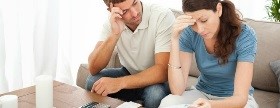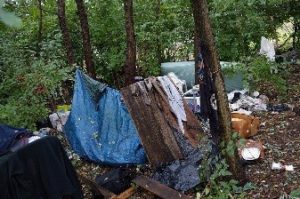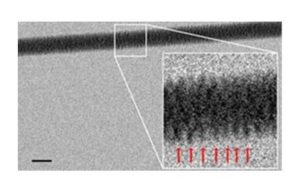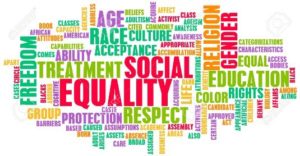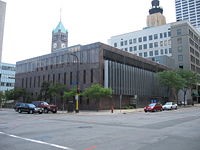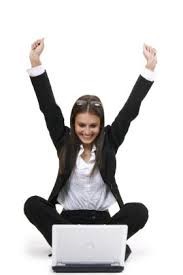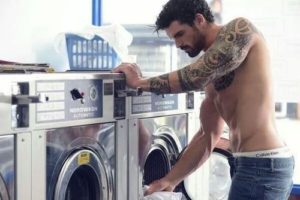This story is essentially true. It happened 50 years ago and I think only my best friend in high school, Harry, knew the story because he lived it with me day by day. Many years passed before I realized how profoundly it changed my life. However, by then enough time had passed that I wondered if I had just made up this mental narrative. When I saw Harry a couple years ago, he validated my recollection. The basic story is true, but it was 50 years ago and some of the details may be miss-remembered.

I generally did poorly in school. From elementary all the way through high school, I got poor grades. I lost (last place) every spelling contest in elementary school. To my knowledge, nobody thought something was mentally wrong with me. It was not only academics. I could skate well but was poor at most sports. They always picked me last for the neighborhood ball games. I had friends but not lots of them. I did poorly a lot and was encouraged to try harder, a lot. In my head and by my grades, I was a below average student. I could do some math problems in my head. I was reasonably good at geometry but I flunked out of Algebra twice in middle school. I wrote poorly. My sentence structure, word choices and spelling were terrible. I assumed most kids were just smarter than I was. I knew a couple kids dumber than I was so I did not worry about it too much. I knew I was not stupid but I also knew I was not very smart.
My next-door neighbor’s grandmother, “Grandma Hughes”, was a very smart woman. She used to call me “the professor” and talk to me as if I was an adult. On the other side of our house was a geology professor at the University of Minnesota, who would teach me about geology but I never saw him do the same for other kids. I did not realize, at the time, that not every kid could understand and talk concepts to adults. The point being there was evidence I was less dumb than I thought I was, but I did not understand what that evidence meant at the time. I knew I was a poor student because there was an overwhelming amount of evidence that I was.
So there I was, 14 years old in 9th grade English. Mr. Hanson (I think) was the teacher. The class was reading Romeo and Juliet aloud. Each student read a small section. When it was my turn, I had a tough time reading. It went on for only about a minute and the teacher had the next kid start to read. I do not remember if I was embarrassed at not being able to read the words. I do not recall anyone laughing or snickering. What I do remember is at the end of the class, Mr. Hanson asked me to stick around because he wanted to talk to me.
He told me that I was functionally illiterate. I could read, but very poorly. He did not give me a long explanation of what that meant. He just said I was functionally illiterate. I assumed he was going to give me the same advice every teacher gave me, “try harder”. Instead, he asked me what kind of things I liked to read. I told him occasionally I would look at car magazines. He then wrote a note to my parents that I was to buy several car magazines for a school assignment. Then he gave me a form assigning me to study hall. He told me I was to read those car magazines every night for an hour and every day in study hall. The next day instead of his English class, I went to study hall. The study hall monitor, a teacher, did not believe I was supposed to read car magazines so he called the English teacher to double check. Once a week, at my convenience, I was to stop by Mr. Hanson’s room and tell him something about what I read.
I really did not know what was going on. By that point in my academic career, several teachers had kicked me out of class. This felt different. Secretly, I felt I was the luckiest kid ever because I did not have to endure English class. I never gave the note to my parents; I just walked to Har Mar Mall on my way home from school and “acquired” the magazines: Hot Rod Magazine and Motor Trends from one of the stores. A couple days later, I” acquired” a Road and Track magazine.

I was a teenager. Every night I would go up to my room before bed and listen to the radio. The only difference was now I would read a car magazine while lying on the bed listening to the radio. I would look at the pictures and do my best to read. Every day instead of going to English class, I would report to study hall. No big deal, there were several other kids in study hall for lots of reasons. Nobody, including me, thought too much about me being there. He told me to be there and I was.
After a couple days, I had “read” the Hot Rod magazine a couple of times. I still remember that the main article was about how to rebuild a small-block Chevy engine. Each time I went through the magazine, I understood a little more than the time before. After a couple weeks, I had gone through each of the magazines several times. At the next check-in meeting, Mr. Hanson suggested I go to the Roseville library (Hamline and County Rd B) and checkout more magazines. I walked to the library after school, got a library card and checked out several back issues of car magazines. Every week I went back to the library, return the ones I had and got more. Occasionally I would check out some Popular Science magazines.
Every day in school and every night at home for over six or seven months, I would read car magazines with permission. I never had to take a test in English that year. Nobody ever asked me to read aloud. I never had to write a paper about what I was reading. All I had to do was check in and tell Mr. Hanson what I was reading. As I recall, we did not have conversations about cars or reading. I would show him the magazines and he would nod. Then he would say keep it up, see you next week.
At the end of the year, Mr. Hanson announced he was leaving for a new job in Washington DC working for an organization helping increase literacy. For those 6 – 7 months, I never felt punished nor did I think I was special in any way. Other kids interacted with Mr. Hanson more than I did. I only saw him once a week for a couple minutes. The rest of his students saw him an hour a day, five days a week for the whole school year. That year I did not learn any of the stuff the other kids learned in English class. I read car magazines.
From the point of view of everyone but Mr. Hanson, Harry and myself, I just had study hall one hour a day. Nobody missed me in English class near as I could tell. My parents never noticed I did not go to English. Mom would ask how school was and I would tell her but never mentioned English class, there was no English class to mention. In study hall lots of kids did things like read magazines instead of doing homework. Everyone thought I was just being the under achiever I was. However, there I was for most of the school year, reading car magazines, every day. I think he gave me a C for a grade each of the three quarters.
At the end of the year, I do not recall that there was any special goodbye between Mr. Hanson and myself. The year just ended and I went on with my life. It was years later when it finally dawned on me how life changing what Mr. Hanson had done for me really was. I was 14 years old and could hardly read. Then six -seven months later, I was almost 15 years old and could read. Turns out you learn to read by reading. If the topic you are reading about is of some interest, you are more likely to stick with it. The words in car magazines are just as good as words in textbooks or great literature. It does not matter what you read when you are learning to read. It is just important that you do a lot of reading. I thought I was dumb but the reality is, I was just a very poor reader.
The first real book I ever read was The Outsiders by S. E. Hinton, which had just been published (April 1967, I looked it up). I do not remember but I suspect Mr. Hanson recommended it to me. For a kid like me, it was a life-changing book. I do not remember for sure, however, my recollection was, for the next year (my sophomore year), I read mostly only my assigned reading. By the time I was a junior, I started to read also for my own pleasure (not assigned by a teacher). I think I read a couple books from the library. We got Life magazine at home and I started to read those also.
Between my junior and senior year I worked at the mini-golf course at Como Park. I probably read several dozen books that summer. The library and I became friends. I still love libraries however; I now prefer to read from an iPad. I was aware that I had a lot of catching up to do, so I did what I could, but I was not obsessed with catching up. I was a confused teenager. Expectations on me were low and I met those expectations. I suppose I have read thousands of books since then.
I read very little until age 15. Teachers assumed we all had read assigned reading from previous years. If I had heard stories discussed, sometimes I had the gist of the stories but mostly I did not. In college when some professor would reference children’s stories to illustrate a point, I often would not have a clue about the reference until years later when I read that book with one of the kids.
I still tend to read a book more than once. I make up all sorts of excuses but the real reason is that is the way I taught myself to read and it just feels right. I did not all of a sudden become a good student. I did better because I could read the questions and maybe had at least glanced at the text. My high school senior year French teacher took pity on me and gave me a red D- rather than the F, I deserved. If she had not done that, I would not have graduated high school with my class. I had done all right on my SATs. Went to college and finally passed algebra (I could read the questions). All of this is more complicated than that but I will save that for other posts.
In hindsight, there were many consequences for not having read much until age 15. Children’s books and juvenile fiction are one of the ways we learn about the nuance of life. I felt different from other kids for lots of years. Maybe if I had read children’s books and juvenile fiction I would have realized I was far more normal than I thought I was.
Conclusion
The basic factors of how fast a car can go is about the weight to horsepower ratio and proper gearing. A powerful engine in a light car is the trick. The Cobra is an excellent example. Handling on a car is about keeping the center of gravity as low and centered as possible. Also keeping the tire tread level on the ground is important. The Corvette did that very well.

Racing is really about the fastest car around the track that meets the requirements of that class of cars. Racing is not about the fastest car possible. Racecars are not good cars for the streets. They have very stiff suspension. They have stiff seats. They do not have heaters or air conditioners. They are very loud. They do not run well at low speeds.
Streetcars made to look like racecars sells lots of streetcars but they are not racecars. Car manufacturers support racing to give the illusion that the car you buy is like those racecars. A cool paint job with a Chevy or Ford logo does not make a car go faster or perform better in any way.
What makes a great car is the things you do and the places you go with your car, not how cool the car looks. When I read many car magazines in a short period, it did not make me desperately want the coolest car. It made me want to do cool things.




